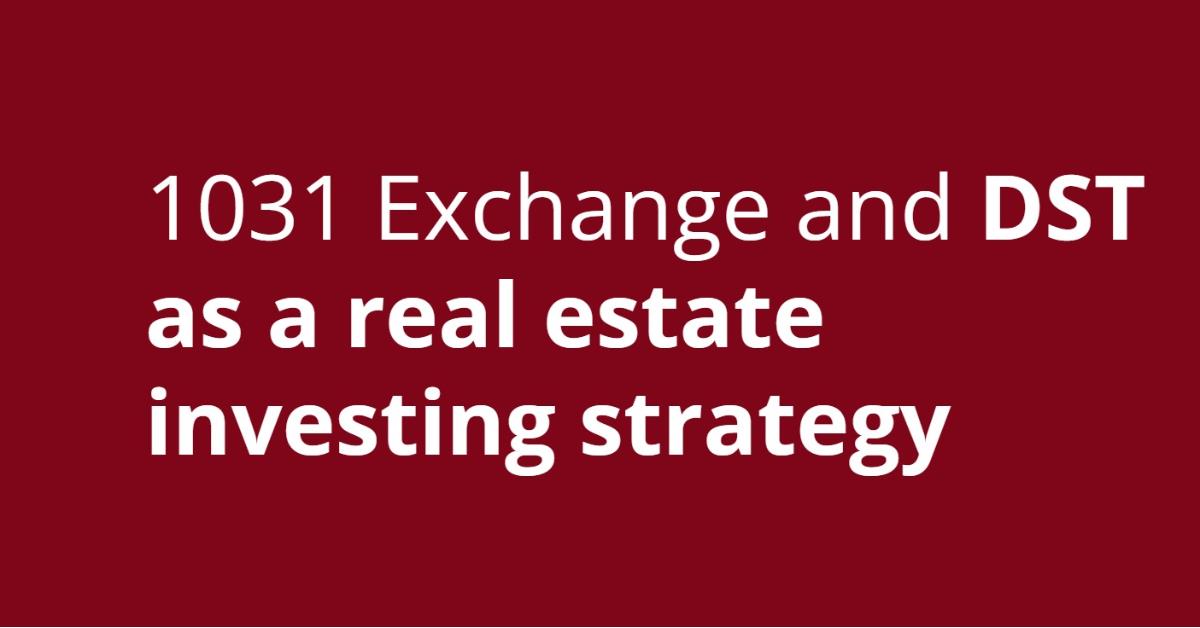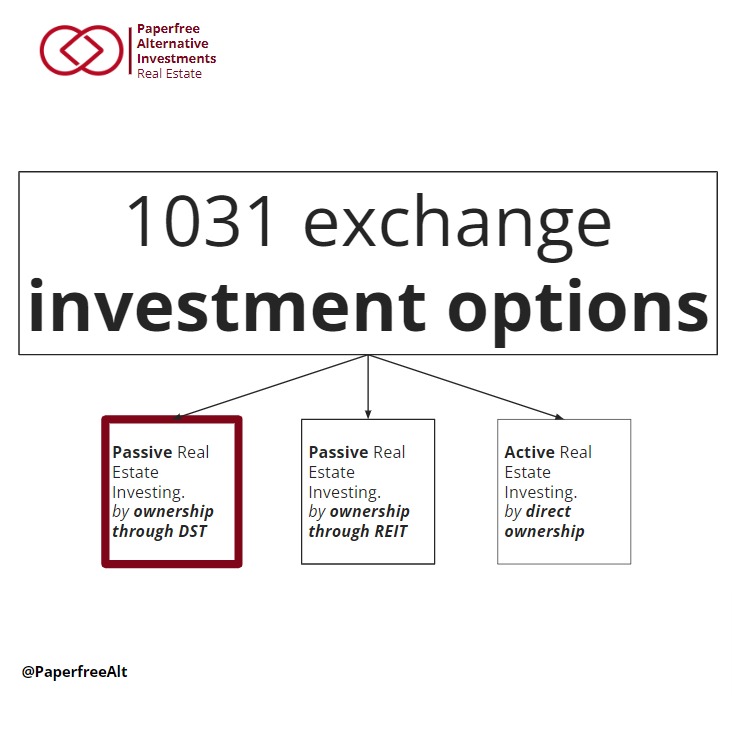What is a DST 1031 exchange in Real Estate Investing?
If you’re interested in accessing high equity growth and tax advantages associated with commercial property investments, DSTs 1031 exchanges are worth investigating.last updated Friday, July 12, 2024
#dst 1031 #1031 exchange dst
| | John Burson | Subscribe |

QUICK LINKS
AD
Get access to EB 5 Visa Investment Projects
A Delaware Statutory Trust (DST) can expose you to potentially high returns from commercial-grade real estate property assets. DSTs provide tax advantages through capital gains, tax deferrals, and depreciation.
However, before considering this investment option, you should know the intricate details, risks, and rules concerning DST 1031 exchanges. To give you the most insight about Delaware Statutory Trusts, we have packed as much information about this popular tool as space allows.
Your 1031 exchange investment options
The 1031 exchange provides a limited range of investment options. A DST vehicle presents a passive real estate investment opportunity in this context. This vehicle allows investors to take advantage of the tax benefits associated with a 1031 exchange while leaving the day-to-day management of the property to professional asset managers. This article will focus on the DST vehicle as a viable option for investors seeking to diversify their portfolios and maximize their returns.

What is a DST 1031 exchange?
DST real estate definition.
Delaware Statutory Trust Real Estate, commonly known as DST Real Estate, is a legal entity that facilitates the pooling of funds by multiple investors for investment in real estate properties. DSTs are structured under Delaware law and offer investors fractional ownership of real estate properties.
Who is DST real estate investor? The best fit profile.
DST Real Estate is commonly utilized by individuals seeking to defer capital gains taxes through a 1031 exchange or those looking for a hassle-free way to invest in real estate without the responsibilities of direct property ownership.
A DST is a passive real estate investment tool that allows individual investors to take advantage of fractional ownership of large commercial properties. Typically, ownership of these property types circulates within big institutional investors institutions, such as REITs, pension funds, and insurance companies.
Unlike co-owner properties, you can be eligible for DST 1031 exchange at the beginning and end of a real estate transaction and receive a tax-exempted monthly income.
1031 exchanges allow you to defer capital gains taxes on profits on the sale of DST investment property, provided you reinvest the proceeds into a replacement asset. The 1031 exchanges concept has existed since 1921 the IRS enacted Title 26, Section 1031. This tax code allowed farmers to trade one portion of farmland for another. As a result, this kind of land transition became known as like-kind real estate.
We recognize DSTs as securities. The IRS classifies DSTs as direct ownership in real estate. It makes DST eligible for 1031 tax deferral treatment from the start of investment to the post-liquidation of your DST property. However, you must identify a DST property during the 1031 Exchange.
The key benefit of DST real estate
The Delaware Statutory Trust (DST) is a favored structure due to its eligibility for 1031 exchanges.
As with most real estate investments, the DST structure offers several advantages, such as tax benefits, income potential, and the opportunity to invest in high-quality assets that are typically beyond the reach of small and middle individual investors.
Investors are distributing their 1031 exchange proceeds among multiple institutional-grade DST properties to achieve passive income potential and diversify their risk portfolio. This approach provides an effective means of asset allocation that facilitates the achievement of financial goals.
How do you correctly identify a DST property?
After a Relinquished Property transfer, you have 45 calendar days to identify a replacement property. You can comply with this mandate by following one of these three DST identification rules.
- 200% Rule
The exchanger can include as many properties as possible. But their total value can't exceed 200% of the Relinquished Property. - Three Property Rule
The exchanger can identify up to three properties without considering their value. - 95% Rule
The exchanger can identify as many properties as desirable for an unrestricted value. However, the properties must comprise 95% of the value of the specified Property.
Tax advisors have varied approaches to guiding clients when identifying fractional interest in a DST. The criteria can be any of the following:
- Identify a percentage of the DSTs
- Pinpointing the portion of each underlying Property in the DST
- Identify the fractional interest of the DST purchasable with the exact dollar amount of equity.
The nuances involved in identifying a DST can make it a highly complex task. This is why you should seek guidance from a tax advisor when identifying replacement property.
Essential facts about 1031 Exchange DST properties
The following facts about DST 1031 Exchange investing can give you a deeper understanding of this complicated but potentially rewarding investment option.
Eligible DST 1031 Exchange Properties
DSTs properties can originate from a vast array of property types, such as
- Industrial buildings
- Retail centers
- Medical offices
- Multi-family apartment buildings
- Self-storage facilities
DST properties typically have tenants committed to long-term lease contracts. Also, most 1031 exchange DST portfolios are exclusively available to accredited investors for a minimum investment of about $25,000.
Financing DST Real Estate Investment
Financing is another critical factor in investing in DST 1031 exchange properties. These properties have various financing ratios since investors must satisfy the "equal or greater" debt requirement. However, some DST 1031 exchange properties are all-cash, debt-free assets for investors wanting to reduce the risk of financing the purchase of properties.
In DST 1031 exchanges, non-recourse financing is the most common loan method. This type of financing prevents the lender from using assets besides your DST 1031 property to remedy a case of default on that Property. This condition is a significant safeguard for you in the event of a severe tenant bankruptcy or a housing market downturn. Even though you could lose your investment in the DST property, your other assets would be safe from the lender.
How You Build Equity with DST Investing
Non-recourse financing is usually a long-term loan ranging from seven to 20 years. Since the lender usually locks in and places the loan, you could have a lower 1031 exchange DST closing risk. The average cost of a DST 1031 exchange property loan is between 40% to 65%. For example, suppose you purchase a DST 1031 property with a non-recourse loan with a 50% cost.
These terms will require you to put down 50% of the purchase's cash amount, and the lender will cover the remaining 50% in the form of a loan. With this type of financing, you will typically get 100% of your pro-rata portion from the principal paydown, allowing you to build equity in the property.
Key Takeaways about DST 1031 Exchanges
Investing in DST 1031 Exchange properties has some risks, promising income, investment growth potential, and substantial tax benefits. This is why DST 1031 Exchanges are primarily available to accredited investors.
If you want more information, contact our investment experts.
Q&A
Is investing in DST properties risky?
Yes. Since real estate is the underlying asset, DSTs pose many risks inherent to property investment. So, you assume the risks of illiquidity, a down real estate market, rising interest rates, recessions, and depressions. In addition, DSTs have their unique hazards, such as regulatory constraints, tax heaviness, unexpected fees, and execution risks.
What are some advantages of DST 1031 Exchange properties?
DST 1031 Exchanges offer many benefits. Through fractional ownership, DSTs expose you to institutional-grade assets with fractional ownership, allowing you to profit from the equity and tax advantages of sizeable commercial property ownership. Also, DSTs are a pre-packaged investment. This arrangement reduces your risk of missing IRS deadlines for 1031 exchanges. The DST Sponsor handles all the due diligence, documentation, compliance, financial reporting, and other Property management-related tasks.
What is one of the most significant disadvantages of investing in DST 1031 properties?
Along with a lack of control and liquidity, the inability to raise new capital or refinance is one of the major disadvantages of investing in DST 1031 Exchange properties. When a DST offering closes, it can't accept subsequent contributions by current and new investors. This rule means major expenditures and losses can negate several years of profits.
[Video] Pros and Cons of Delaware Statutory Trusts (DSTs)
Story Profile
| Story Index | XKHGS | |
| Last update | Friday, July 12, 2024 | |
| Story Sources | ||
| Story Nominated by | @whypronin, @paperfreenow | |
| Story Author(s) | ||
| Story Editor(s) | Yury Pronin | |
| Tailored to | Investor | |
| Keywords | dst 1031 1031 exchange dst 1031 exchange dst properties | |
| Social hashtags | #CapitalGrowth #RealEstate | |
| Linked companies | NA | |
| Topics | Investment Strategy | |
| Regions | National | |
| Industries | Real Estate | |
| Related information |
Free Consultation
Search within Paperfree.com
